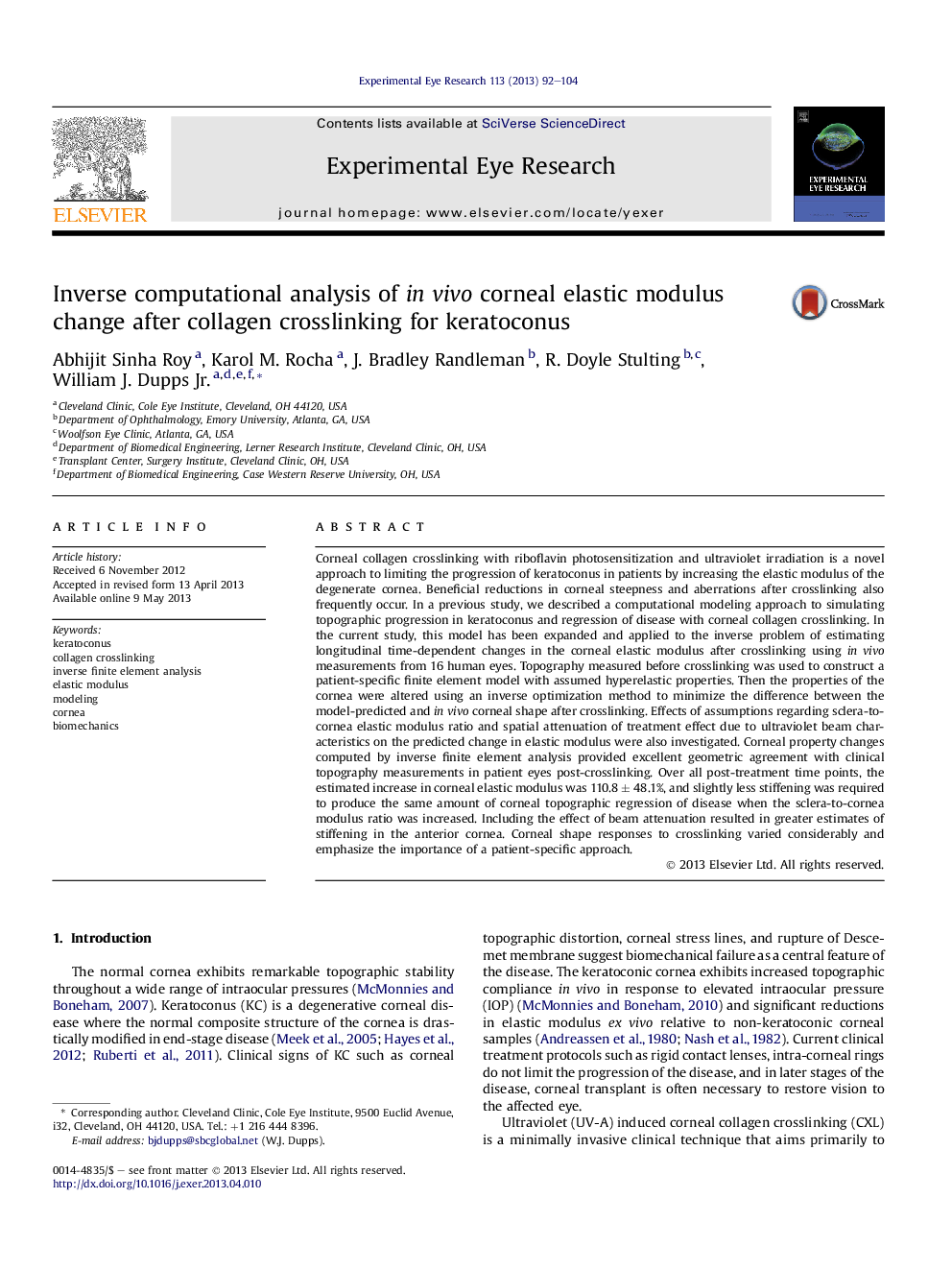| کد مقاله | کد نشریه | سال انتشار | مقاله انگلیسی | نسخه تمام متن |
|---|---|---|---|---|
| 6197266 | 1602609 | 2013 | 13 صفحه PDF | دانلود رایگان |

- We present the first report of a continuum modeling approach for evaluating in vivo corneal elastic modulus changes after collagen crosslinking.
- The method employs patient-specific inverse finite element modeling of clinical geometry.
- High-fidelity finite element representations of clinical corneal topography were obtained with low RMS error and high correlations to clinical shape metrics.
- Inverse optimizations suggested a mean doubling of corneal elastic modulus after crosslinking, consistent with in vitro studies.
- Individual variation in crosslinking-mediated material property change was high and varied significantly over the follow-up period.
Corneal collagen crosslinking with riboflavin photosensitization and ultraviolet irradiation is a novel approach to limiting the progression of keratoconus in patients by increasing the elastic modulus of the degenerate cornea. Beneficial reductions in corneal steepness and aberrations after crosslinking also frequently occur. In a previous study, we described a computational modeling approach to simulating topographic progression in keratoconus and regression of disease with corneal collagen crosslinking. In the current study, this model has been expanded and applied to the inverse problem of estimating longitudinal time-dependent changes in the corneal elastic modulus after crosslinking using in vivo measurements from 16 human eyes. Topography measured before crosslinking was used to construct a patient-specific finite element model with assumed hyperelastic properties. Then the properties of the cornea were altered using an inverse optimization method to minimize the difference between the model-predicted and in vivo corneal shape after crosslinking. Effects of assumptions regarding sclera-to-cornea elastic modulus ratio and spatial attenuation of treatment effect due to ultraviolet beam characteristics on the predicted change in elastic modulus were also investigated. Corneal property changes computed by inverse finite element analysis provided excellent geometric agreement with clinical topography measurements in patient eyes post-crosslinking. Over all post-treatment time points, the estimated increase in corneal elastic modulus was 110.8 ± 48.1%, and slightly less stiffening was required to produce the same amount of corneal topographic regression of disease when the sclera-to-cornea modulus ratio was increased. Including the effect of beam attenuation resulted in greater estimates of stiffening in the anterior cornea. Corneal shape responses to crosslinking varied considerably and emphasize the importance of a patient-specific approach.
Journal: Experimental Eye Research - Volume 113, August 2013, Pages 92-104